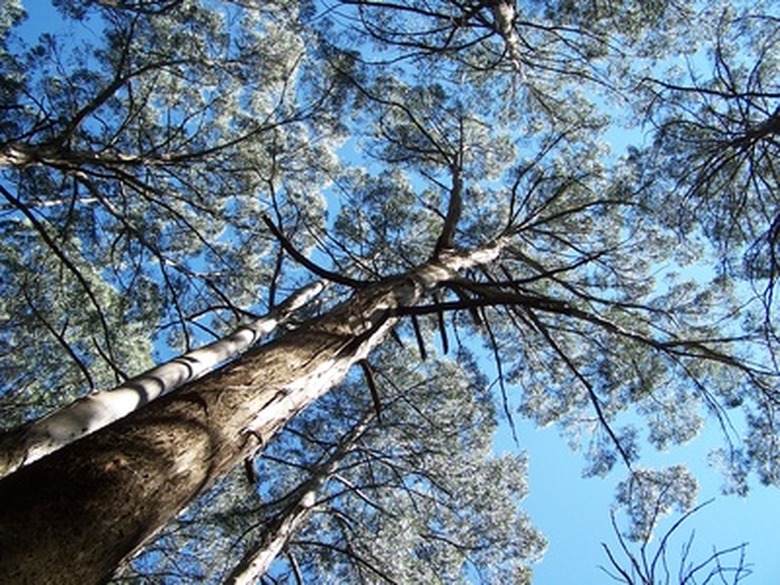Bugs From Ash Trees
Bugs that come from ash trees are a symptom of a continuous problem of insect infestation; problematic insects such as aphids and borers may severely disfigure an ash tree, diminish vigor and overall health, and potentially lead to death. Keep your ash tree strong through proper care for the ability to fight off disease. As a chemical control, apply insecticidal soap or neem oil to control bugs.
Ash Sawfly
Ash sawflies, blackheaded (Tethida barda) and brownheaded (Tomostehus multicinctus), are bugs that come from ash trees when an infestation has taken place. During the spring season, adult ash sawflies make small cuts in leaflets of ash trees and lay their eggs; the hatched eggs produce green/yellow/white larvae that feed on the leaves of the ash tree. Younger larvae chew holes, while more mature larvae consume entire leaves. Total defoliation may occur within one to two weeks, according to ForestPests.org. The Colorado State University Extension suggests use of parasitic wasps in fighting ash sawfly infestations; these natural enemies will help prevent or rid your ash tree of sawflies.
- Bugs that come from ash trees are a symptom of a continuous problem of insect infestation; problematic insects such as aphids and borers may severely disfigure an ash tree, diminish vigor and overall health, and potentially lead to death.
- The Colorado State University Extension suggests use of parasitic wasps in fighting ash sawfly infestations; these natural enemies will help prevent or rid your ash tree of sawflies.
Woolly Ash Aphid
Woolly ash aphid (Prociphilus fraxinifolii) are bugs that are found on ash trees. Woolly ash aphids have soft yellow-green bodies in pear or globule shapes; ash aphids excrete a wax that causes them to appear wool-covered. Aphids suck sap from ash leaves causing honeydew to seep to the surface. Honeydew is a juice formed in the plant that, when exposed, creates an ideal environment for the development of sooty mold, a fungus that infects ash trees. Symptoms of woolly ash aphids include curled leaves, as well as the appearance of honeydew (a white substance) on leaf surfaces, according to ForestPests.org. Consider the use of parasitic wasps for biological control.
Ash Borer (Trunk Borer)
Ash borers (Podosesia syringae) are bugs that attack the trunks of ash trees. Ash borers are moths with clear wings, brown/black bodies, and black-, orange- and yellow-marked legs. Eggs laid in bark hatch into larvae; the white larvae create holes in the wood of the trunk and as the mature adult borers exit, they also leave behind holes. Symptoms include the presence of sap dripping from tiny bark holes, according to ForestPests.org. Ash borers can severely damage or kill trees. Keep ash trees free of wounds, as injured trees are more susceptible to borer infestations. Parasitic wasps are a biological control method for ash borers.
- Woolly ash aphid (Prociphilus fraxinifolii) are bugs that are found on ash trees.
- Woolly ash aphids have soft yellow-green bodies in pear or globule shapes; ash aphids excrete a wax that causes them to appear wool-covered.
References
- Forest Pests: Ash Pests: A Guide to Major Insects, Diseases, Air Pollution Injury, and Chemical Injury; Solomon, J.D.; Leininger, T.D.; Wilson, A.D.; Anderson, R.L.; Thompson, L.C.; McCracken, F.I.
- Forest Pests: Blackheaded Sawfly
- University of California IPM Online: How to Manage Pests in Gardens and Landscapes
